I thought these posts on Preah Ko were going to be in only 3 parts. But Preah Ko’s center has so many treasures that it’s worth lingering over.
The last posts focused on art that fostered political cohesion as the new Khmer state grew–more than 250 years before Angkor Wat went up. But Preah Ko also has higher meanings that are more spiritual. It balances worldly and spiritual levels so well that you need to appreciate both equally to understand this temple’s impact on Khmer art ever since it was built in the late 9th century. Come in and look towards the heavens.
Above the door guards that the last post examined (yes, we made it past them) we can see the same mixture of dense animated vegetation and elegance.
A monstrous figure called a kala vomits a garland, which surrounds a dancing male guardian. Yeah, kind of gross, but the dancer is very elegant. So this part of the towers conveys the same theme as the guardians below: power mixed with aristocratic elegance. These shrines’ carvings are special because:
1. The entire towers were carved, so their whole edifices radiated nature’s forces and civilized them.
2. The towers are multi-leveled, so when you look higher, you peer into more spiritual realms–Preah Ko’s shrines seem to embody a hierarchy of existences, and so far we’ve only explored the lowest and densest.
These figures pray over the lintel of one of Preah Ko’s doors. They mix elegance and strength as the door guards do, but they’re more spiritualized.
They’re not in your face or displaying their physiques. You actually have to squint to see them, and it took me a while to notice them–they’re so small in relation to the rest of the lintel.
But we’re in a more rarefied world now.
You can see several levels on the upper parts of Preah Ko’s shrines.
And the levels become smaller towards the top. This was already an old feature of Indian temples, which inspired the designs of Khmer temples–though Khmers put their own spins on them. Many devotees see the multi-leveled towers as a hierarchy of increasingly spiritual worlds.
Angkor Wat was also probably designed as multiple levels of reality that are increasingly spiritual.
But Preah Ko mixes lofty aspirations with intimacy. Indravarman I honored his parents here, and the closeness and human scale of the 6 shrines were ideal for private devotions.
I lingered on Preah Ko, and it was so influential in Khmer art, because it blends all levels of meaning. Power and elegance, high aspirations and intimacy, and the material and spiritual worlds are in perfect balance.
Khmers must have seen these as the ideal patterns that order nature, society and the heavens. They built many huge temples after Preah Ko, but none blended all these domains better.

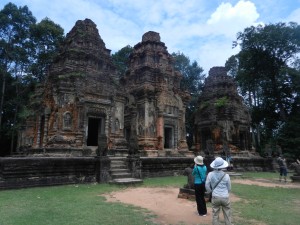
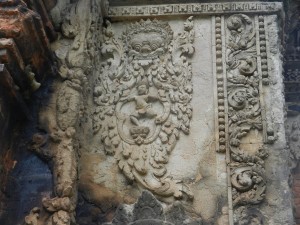
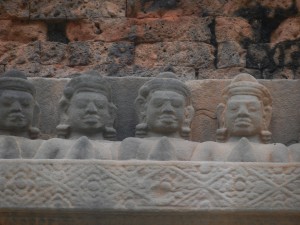
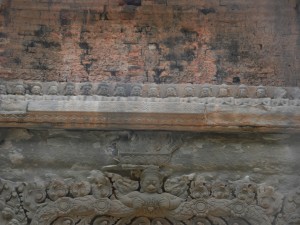
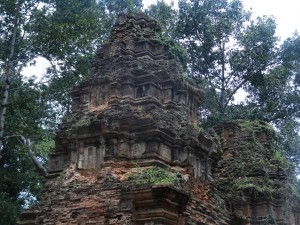
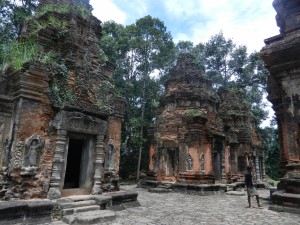
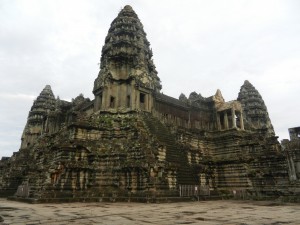
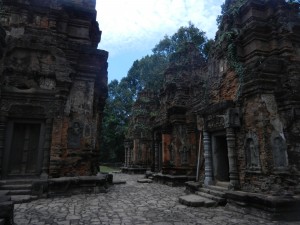
Comments on this entry are closed.